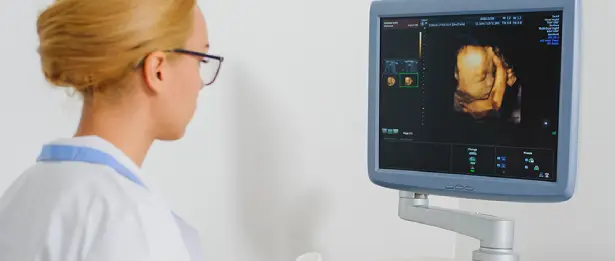4D Ultrasound

Thanks to 4D ultrasound devices at Liv Hospital Gynecology and Obstetrics Clinic, early diagnosis of gender, cleft palate, cleft lip, missing fingers, and disorders arising from the brain and spinal cord can be made. Down Syndrome, which is seen by nuchal translucency measurement, can be scanned in the 3rd month thanks to 4D ultrasound. For these reasons, 4D ultrasounds are preferred over traditional - standard 2D ultrasounds.
Babies are monitored more clearly
With 4D ultrasounds, the development of twin and triplet babies, which couples are waiting for with great happiness and excitement, can be monitored more clearly. In addition to the traditional 2-dimensional examination feature, 4D ultrasounds include both color Doppler and 3rd dimension features, giving families who are excited about their baby the opportunity to learn the gender and take color photographs from the 3rd month. In addition, compared to black and white and 2D ultrasound, it allows the baby in the womb to be imaged one and a half months earlier and to obtain a clear photographic color image.
It turns into the most beautiful memories
With all these features, 4D ultrasound provides families with pleasant moments such as interpreting details such as hands, feet, nose and face during the shooting and trying to make the baby look like someone else, as they wonder who their baby looks like most after their health condition, and enables the excitement during pregnancy to turn into beautiful memories.
What are the advantages of 4D ultrasound?
- Establishing an emotional bond with your baby in the womb thanks to its lifelike appearance
- Determining the baby's gender earlier (at the 14th week)
- Developmental analysis of the baby
- Detailed evaluation of multiple pregnancies
- Diagnosis of structural problems of the uterus
- Detection of anomalies that may occur in the placenta
- Diagnosing the causes of abnormal bleeding
- Diagnosis of ectopic (external) pregnancy
- Diagnosis of ovarian tumors, cysts, polyps and myomas
- Determining the location (localization) of the placenta









